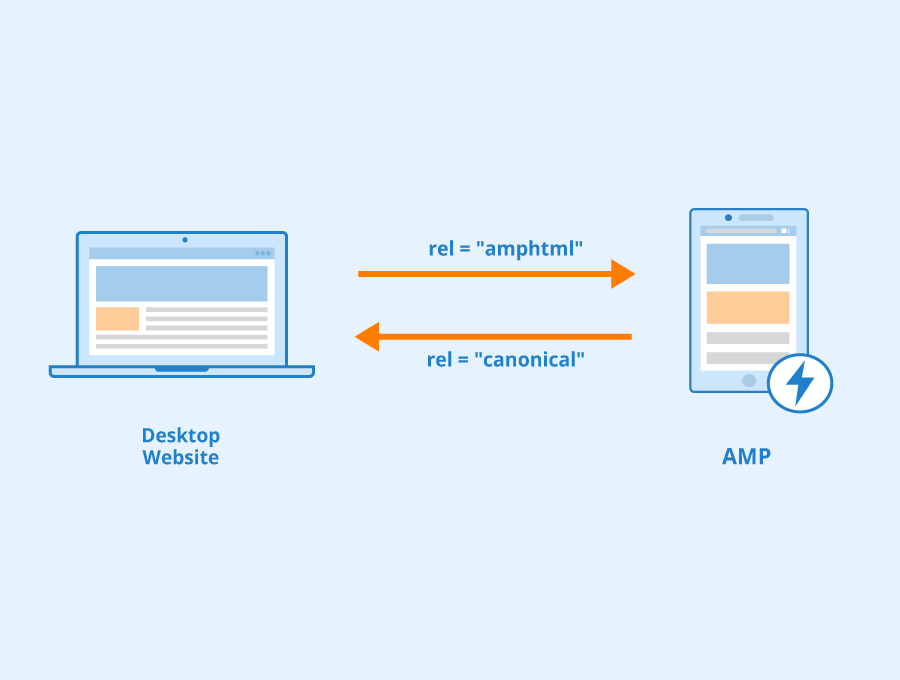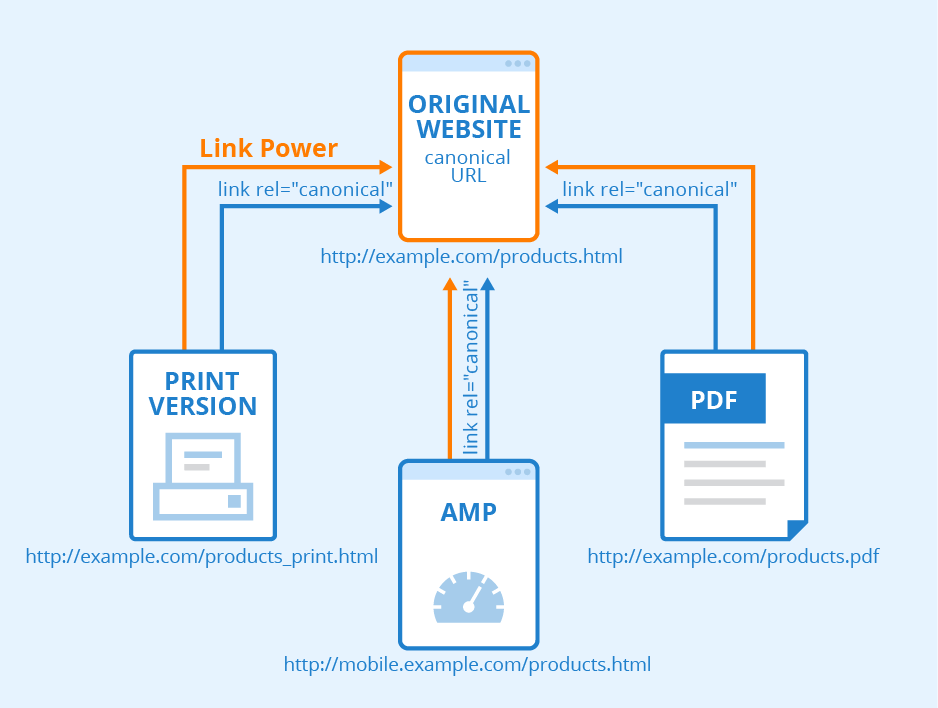
Key Takeaways for you
| – AMP project by Google is an open-source framework developed with a mission to provide a user-first format for web content. – AMP serves as a stripped-down version of web pages designed to load quickly on mobile devices. – AMP prioritizes improving user experience over all other factors as it is in SEO. The goal is to deliver content to users as fast as possible. – Faster loading pages, easy implementation, versatility, and mobile-first indexing are some of the benefits, however not all websites get preference on the SERP. – AMP can still be beneficial in 2022 for businesses with page speed issues or traffic from mobile devices, but it’s not a requirement for top news stories and may not be convenient for all websites. |
According to Google, the average load time for a regular mobile page is 15 seconds while the average load time for an AMP-implemented page is 0.7 seconds.
How is this achieved?
Through mobile SEO.
Mobile SEO is the practice of optimizing your website for users on smartphones and tablets.
Google’s mobile-first indexing ranks the search results based only on the mobile version of the page. This occurs even if you are searching from a desktop. This means your ratings are based on how good the mobile version of your site is.
How to make your website mobile-friendly?
There are three ways you can do that.
By serving a separate mobile version of your web pages. (Eg. m.facebook.com)
A separate mobile version means you are having the same content for two different pages with different URLs. This causes duplicate content, and Google does not appreciate duplicate content.
Is it a good idea to serve a separate version of your web pages then?
By having a responsive website
If you want a responsive website, you need specific themes like Astra Pro themes for WordPress which help your sites load faster.
By implementing AMP
AMP stands for Accelerated Mobile Pages which was made to speed up pages for users. Implementing AMP makes your website load faster and makes it stand out better in Google results
How does AMP work?
Why was it created in the first place?
Let us understand the uses and relevance of using AMP in today’s scenario.
What is AMP in SEO?
The AMP project by Google is an open-source framework developed with a mission to provide a user-first format for web content.
An open-source framework is a software development model that allows free access to the original code to the public. The code can be redistributed and modified to suit the requirements of the user.
AMP became a lot more than just accelerated mobile pages and expanded to emails, stories (as seen on Instagram and news stories), and ads.
How does AMP work?
AMP serves as a stripped-down version of web pages designed to load quickly on mobile devices.
This is achieved through a lot of design restrictions like no pop-ups, CSS less than 50 KB, and Javascript less than 150 KB. Before you open a page Google has already created a cache of the page and runs it from its own server.
It may sound technical but don’t worry about it. It is what happens in the back end. The extra features like videos, ads and animations are removed and only the relevant content is displayed.
How does AMP affect SEO?
AMP prioritizes improving user experience over all other factors as it is in SEO. The goal is to deliver content to users as fast as possible. There are different advantages for different stakeholder groups – businesses, advertisers, publishers, and users.
The benefits of implementing AMP in SEO are:

Fast loading pages
The faster the web pages load, the happier the users. Pages load faster to users by optimized code and caching by Google’s Content Delivery Network. Such pages rank higher and have lower bounce rates and are preferred to rank in search results. Businesses can provide fast experiences to users across all platforms.
Easy to implement:
AMP pages are easy to build and take minimal investment in developer resources. There are convenient tools for content management systems like WordPress which makes AMP implementation a matter of few clicks.
Versatility:
AMP is supported by multiple platforms like Google, Bing, and Twitter, providing consistency for users wherever they may choose to access the content.
Helps with Mobile-first indexing:
Google gives preference to mobile-friendly pages even if you are browsing from your website. Implementing AMP helps you with making your web pages mobile-friendly.
Preference in SERPs:
News websites that use AMP may get featured news carousels. A combination of AMP and structured data enhances the chances of getting rich results. However, not all websites can get a preference in SERPs.
Using AMP is not always advantageous. You would miss out on several things for your website by implementing AMP.
- AMP is harder to implement if you do not use CMSs like WordPress. You will need to use coding to implement AMP or hire developers.
- You lose out on backlinks. When you use AMP, your earned link might end up linking to a Google page, because Google is creating a cache and serving the link from its own server.
- Ad revenue takes a hit. AMP prevents ads and pop-ups which is great for speed, but not good if ads are a source of income.
- Analytics data gets messed up. Standard analytics tags cannot be used for AMP pages as the pages are served on Google’s own servers. You will not be able to track traffic and what affects it.
- Website functionality and branding will get compromised because AMP pages are stripped-down versions of the actual pages. This may affect the features used for branding and driving traffic to other pages.
- AMP strips down lead-capturing forms and downloadable lead magnets. This altogether reduces the ability of the pages to capture leads.
- Social sharing is restricted as the share buttons developed using Javascript may not be displayed properly on AMP pages.
- It looks like the cons of using AMP for your website outweigh its pros. Then why should one use it? Who can really benefit from it?
Do we need AMP in 2022?
AMP has been an object of skepticism and received a mixed response since its inception.
First of all, considering all the disadvantages it posed, people wondered whether it was actually bad for websites.
Secondly, people questioned Google’s intention to claim dominance in the internet space as it gets to cache, preload, and prerender the content through its own server before a user clicks on the link in the search results.
Not to mention the fact that Google is the key code contributor and promoter, so much so that it is referred to most often as Google AMP.
Google made it clear in 2021 that AMP is not a ranking factor and documented in Google search Center that,
“While AMP itself isn’t a ranking factor, speed is a ranking factor for Google search. Google search applies the same standard to all pages, regardless of the technology used to build the page.”
Moreover, it has added in what it called the “page experience update”, that using the AMP format is no longer required even for top news stories. It talks about optimizing your core web vitals score.
Then do we even need AMP?
At the risk of sounding cliche, I will say – it depends!
Google said that even if AMP is not important, speed is essential for Google search. If you run a site with news content, for example, you can continue to use AMP. Some of the reasons you can still use AMP are:
- Most of the traffic to your website is from mobile devices.
- You have page speed issues, in spite of your efforts to optimize your website for speed.
If your business model can benefit from using AMP, then why not!
I think it is okay to know how to implement it for your website, you know, just in case!
How to implement AMP in WordPress and optimize it for SEO?
Installing AMP in your WordPress is very easy. Look for the AMP plugin in Plugins.
- Click on Install now. Once it is installed you need to click on Activate.
- You can then click on “Open the onboarding Wizard”. That will take open the customizing wizard.
You can then follow the wizard and choose what is relevant to you and click next until you are done with the wizard.
- The next phase in the wizard makes you choose your technical background to make the most of AMP experience.
- When you click on next it takes you to Site Scan. The Plugin checks for compatibility issues in your website. Certain themes and plugins are not compatible with AMP and a list of them is shown after the site scan.
- You choose a template mode for your web pages as you like followed by a Theme template you want your readers to see on their mobile pages and then you click on Finish once the settings are applied to your website. This completes your AMP implementation.
How to optimize AMP for SEO?
If you have considered using AMP for your website, then as an SEO professional you need to understand that there is still work to be done for AMP pages. It still needs to be optimized to make it SEO-friendly.
- Check whether it makes sense for your website. In light of the fact that AMP is no longer required, you need to see whether it is useful for your business or not.
- Use WordPress. If you are going to use AMP, it is best that use apply it on WordPress which is easy and convenient. Else you need help writing a code for AMP.
- Don’t apply AMP on landing pages, or high-traffic and high-converting pages. AMP does not support features like forms, brand ads, and buttons required for conversions.
- Use structured data. A combination of AMP and structured data helps you get rich results.
- Follow AMP guidelines for image size, fonts, and videos for best results.
- Do not add AMP URLs to XML sitemaps unless your website is completely AMPed. Only canonical URLs need to be added to the sitemaps.
Summing up
Whether to AMP or not to AMP, is still a question and a matter of perspective and use cases.
If you are on the fence, maybe you can take Google’s word that you can do without it and focus on core web vitals metrics. But if you run a news site or speed really matters for your website, don’t listen to anyone, continue to use it as long as you need to.
Even if you do, it is better to adapt it to your existing SEO strategy rather than take it as a whole new approach. Do what you have to for high-performing content and a better user experience.
What are your thoughts on implementing AMP?
Let me know in the comments.


